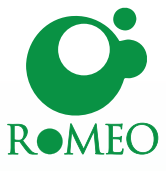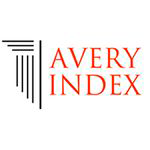Archives
-

IN DETAIL
No. 10 (2025)Guest Editor:
Angela Kyriacou Petrou / University of Nicosia, Cyprus
This issue explores the complex con-junctions between people, materials and meanings through the micro-scales of architecture. The detail is the point at which things meet –an entanglement between materiality and everyday life. From technical detailing to the materiality of living, the issue seeks to identify the potential opportunities held in junctions, processes and moments of material convergence. Whether matter or data, material moments are not seen as purely static but instead are understood as substances which exist in relation to natural or cultural events or potential interactions.Seen as part of a bigger story, ‘spatial evidence’- artefacts/ seams / openings / assemblages /flotsam /deposits/ leakages/ overflows/ wreckages/ erosion/disorder- all disclose a story about the corporeality of life through micro moments, acting as a testimony to life lived. In order to make these observations we need examine material details as moments of a larger series interactions and networks. Represented as a slice of space we witness our environment- like detectives - in slow motion, attempting to reveal micro details, opportunities, invisible stories, hidden worlds, and unknown lives- through the potential of the detail. -
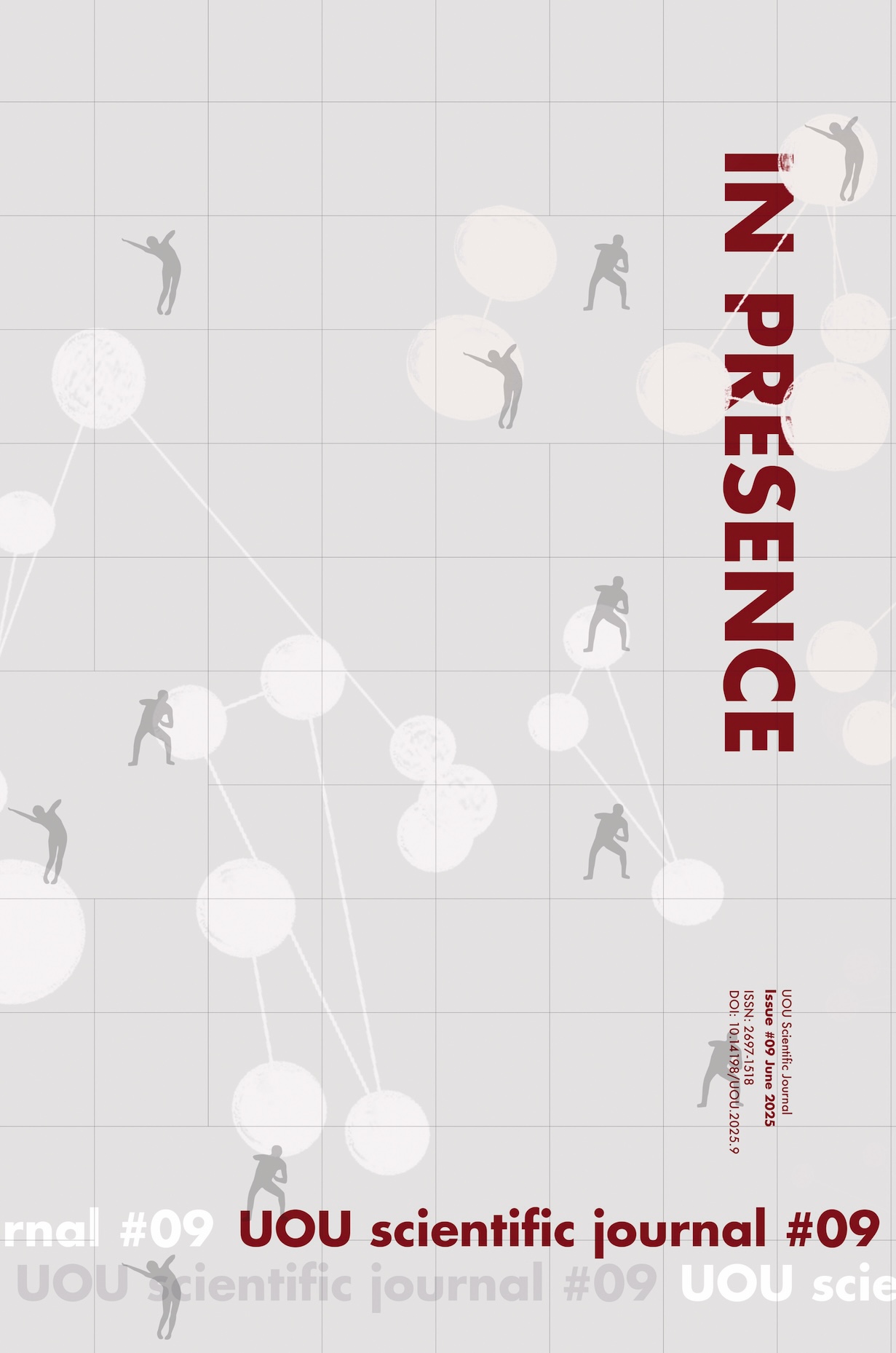
IN PRESENCE
No. 09 (2025)Guest Editors:
Marco Bovati / Politecnico di Milano, Italy
Anna Moro / Politecnico di Milano, Italy
Daniele Villa / Politecnico di Milano, ItalyThis UOU issue, a sort of derived, expanded and deepened elaboration of EURAU Milano 2024, reaffirmed the importance of 'togetherness’, the co-presence of bodies in space as both a social value and a tool for rethinking spatial practices in an age of crises and transition.
Collectively, the articles highlight how the relationship between space and the body is not a peripheral concern but a fundamental condition for understanding, designing, and transforming contemporary environments (Pasqui, 2018). They show how spatial practices and theories, when attentive to embodied experience, can engage with a wide range of contemporary challenges - from political to ecological, from the situated to the digital - revealing new, urgently needed trajectories for design research and practice.
-
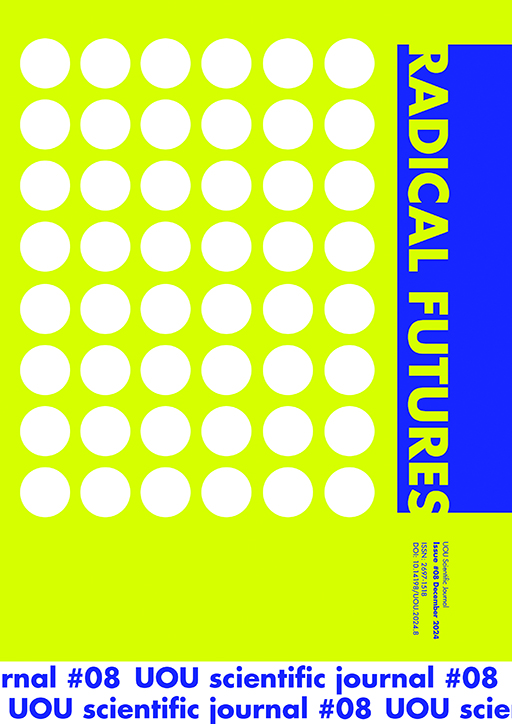
RADICAL FUTURES
No. 08 (2024)Guest Editor:
Miguel Luengo Angulo / Universidad Europea de Madrid, SpainRadical Architecture belongs to a fleeting but energetic period that was essentially deployed in Europe between the years 1960 and 1975 with the purpose of thinking about the architectural discipline from its origin (hence its essential, fundamental nature), displacing the understanding of the craft from the architect's routine as a builder towards the expanded territory of reflection on the world and the architect's competence to interpret it and act in it.
Radical Futures aims to achieve a contemporary understanding of this critical mindset, extend the limits of radical architecture and urbanism, and embrace the emergence of new practices supported by unconventional approaches from design, urbanism and technology.
-
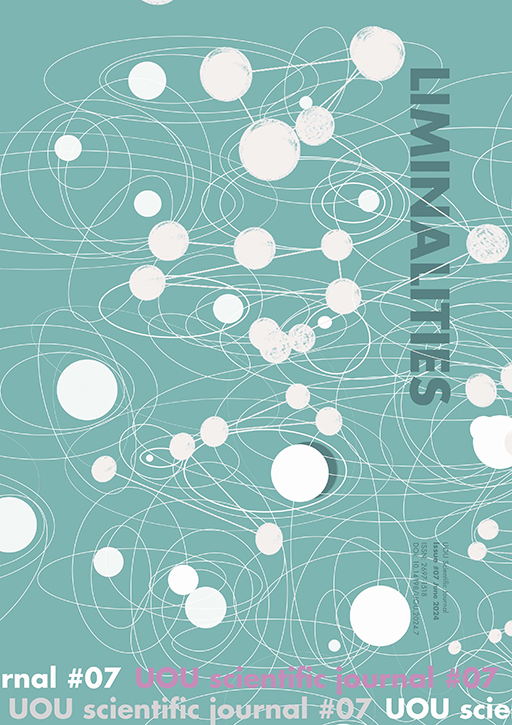
LIMINALITIES
No. 07 (2024)Guest Editors:
Sarah Stevens / University of Brighton, UK
Charlotte Erckrath / Bergen School of Architecture, NorwayThis call for edition 7 of the UOU Journal invites contributions that explore liminalities in architectural and spatial design. This call serves to introduce the theme, but contributors are encourages to submit material that critically questions, explores and experiments with the subject area within its widest sense through all forms and scales.
-
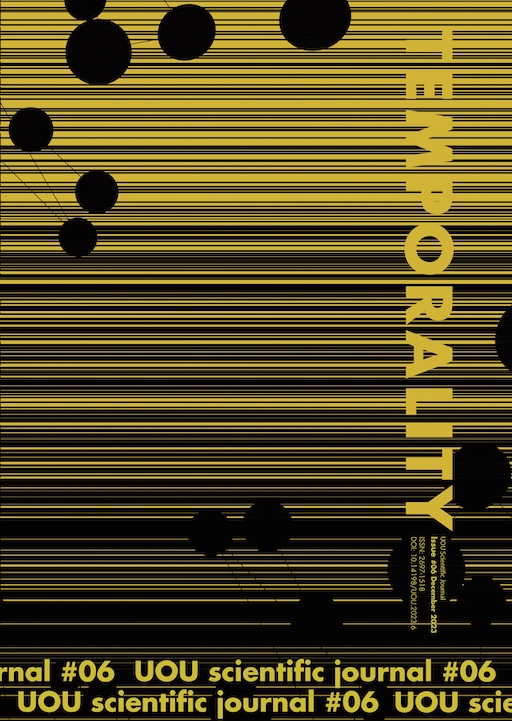
TEMPORALITY
No. 06 (2023)Guest Editors:
Mauricio Morales-Beltran / Yaşar Üniversitesi, Türkiye
Jerzy Łątka / Wrocław University of Science and Technology, PolandIn this issue, we are tasked with understanding the concept of temporality in architecture from fresh and revisited perspectives. Therefore, the call for this edition invited authors to explore concurrent, overlapping, and often indivisible time-space relationships. Their responses, ranging from phenomenological and even poetic approaches to pragmatic views of temporality as physical interventions, offer a diverse, rich, and deep overview of temporality in architecture.
-
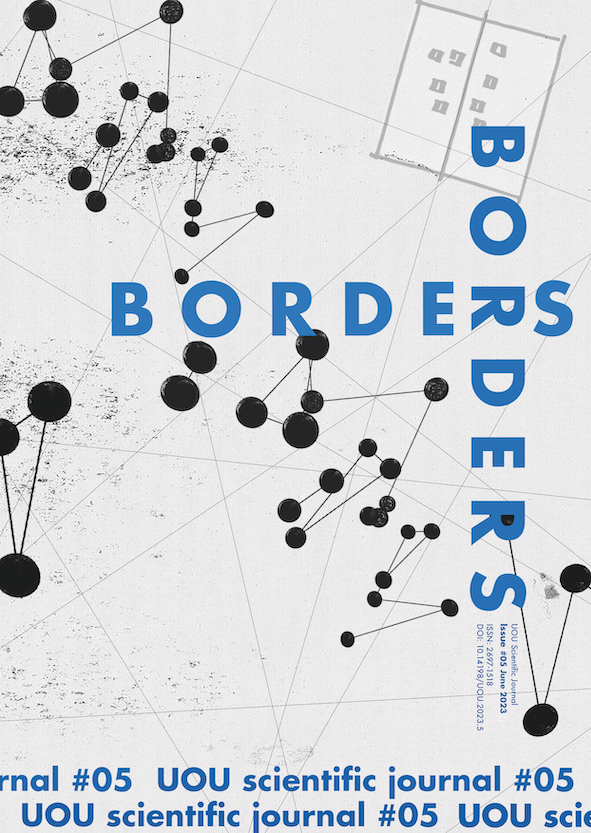
BORDERS
No. 05 (2023)Guest Editor:
Michael Devereux / University of the West of England (UWE) Bristol, UKIn this issue we are tasked with considering the questions that surround the concept of BORDERS and how we address it in architecture and urbanism. That is why the call for this edition invited contributors to consider this idea of BORDERS, Frontiers and Thresholds widely: tangibly, intangibly, large scale, small scale and as conceptually and intellectually as appropriate, bringing new thinking to the fields of architecture and urbanism. And, the response has been appropriately far reaching and far thinking.
-
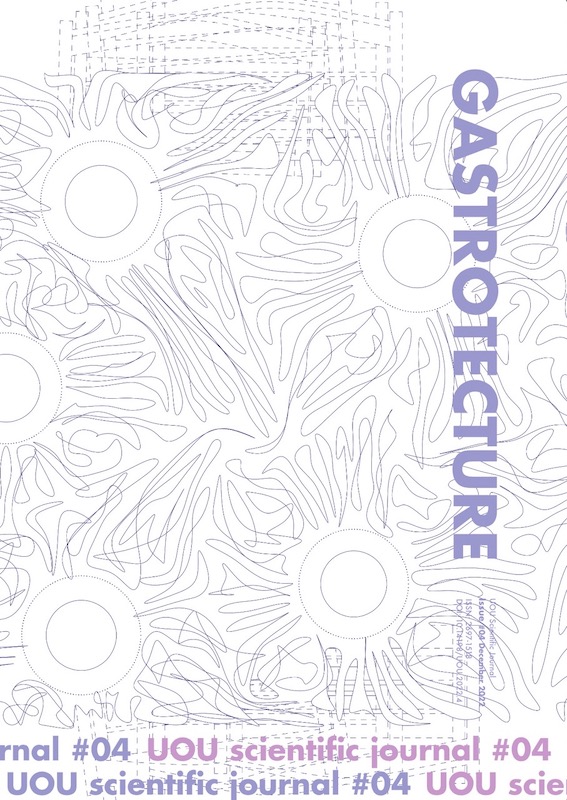
GASTROTECTURE
No. 04 (2022)Guest Editor:
José Antonio Carrillo Andrada / American University in Dubai, UAEGASTROTECTURE gathers interdisciplinary expressions of Gastronomy in the field of research in Architecture and Urbanism in an international framework. Gastrotecture aims to achieve a broader understanding of the intertwined relationships between architecture and gastronomy, expand the limits of both disciplines and register the emergence of new practices supported by innovative and unconventional approaches from design and technology.
-
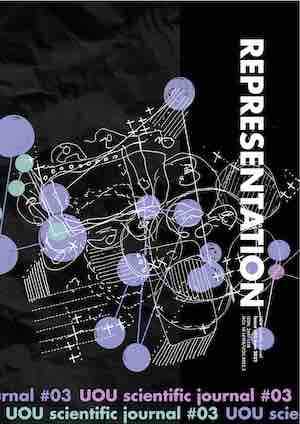
REPRESENTATION
No. 03 (2022)Guest Editor:
Ozan Avci, MEF Istanbul, TurkeyREPRESENTATION is a wide umbrella that covers different disciplines such as design, arts, architecture, cinema, literature, politics, economics, semiotics, etc… We may even say that representation is in every act of human beings whenever they think about something. This fundamental role of representation makes it very critical in the design process, thus the whole design process is based on the dialogue between the inner and outer representations. In this third issue of UOU Scientific Journal we would like to focus on the nature of representation, its own ontological aspects, materiality, immateriality and its crucial role in the design process rather than its metaphorical side related with politics and semiotics.
-
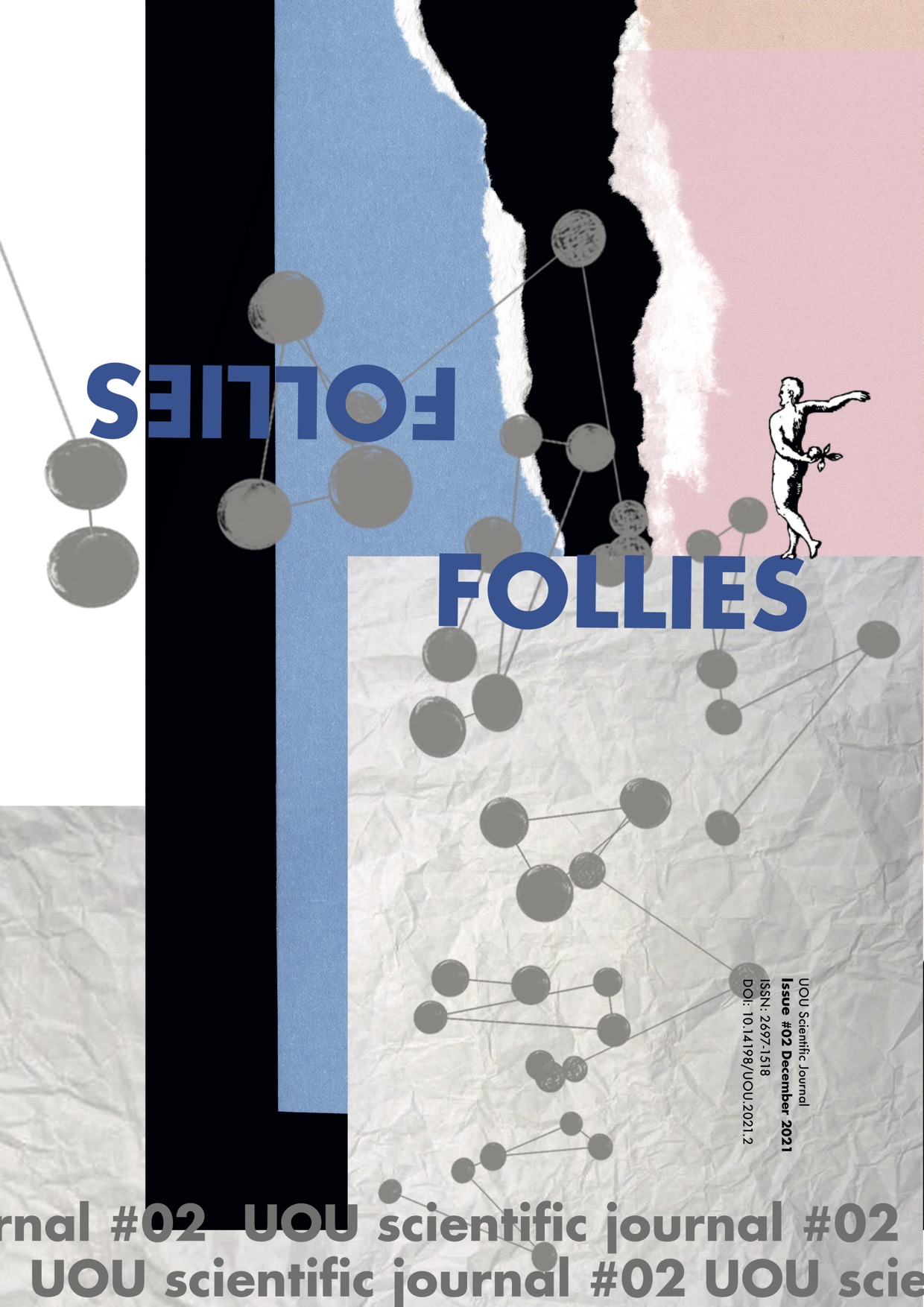
FOLLIES
No. 02 (2021)Guest Editor:
Sofia Aleixo, Evora University, PortugalSullivan’s definition of Follies has been drastically challenged by the Covid-19 pandemic as the purpose of building may not simply be to respond to a functional need, but rather to be attractive and recover a sense of fun and pleasure that has been taken away for more than a year. How can spaces reengage people with each other, and with cities? How to attract people to give the spaces meanings and transform previous sad and empty spaces into lively and safe places? Are merely functional spaces needed, or are socio-cultural public places needed more? Will building design need to be rethought with no specific purpose or intention in mind? Will urban and architecture policies attain to these needs? Within this framework, Follies, the second Issue of the UOU scientific Journal, aims to redefine the notion of socio-cultural values of the public realm in relation to material and innovative practices from impartial perspectives.
-
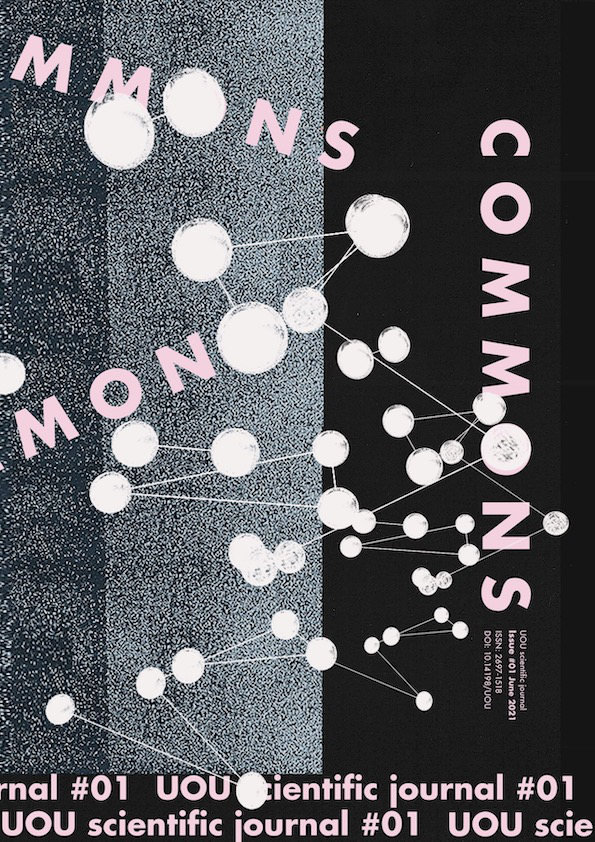
COMMONS
No. 01 (2021)Guest Editor:
Maria Luna Nobile, Umeå University, SwedenWhat impact can the notion of Commons have on the transformation of cities? And what agency must designers have in contributing to such a transition in the current condition of Urgency? In this framework, Commons, the first Issue of the UOU scientific journal aims to redefine the notion of values in relation to material and innovative practices from an unprejudiced aspect.


